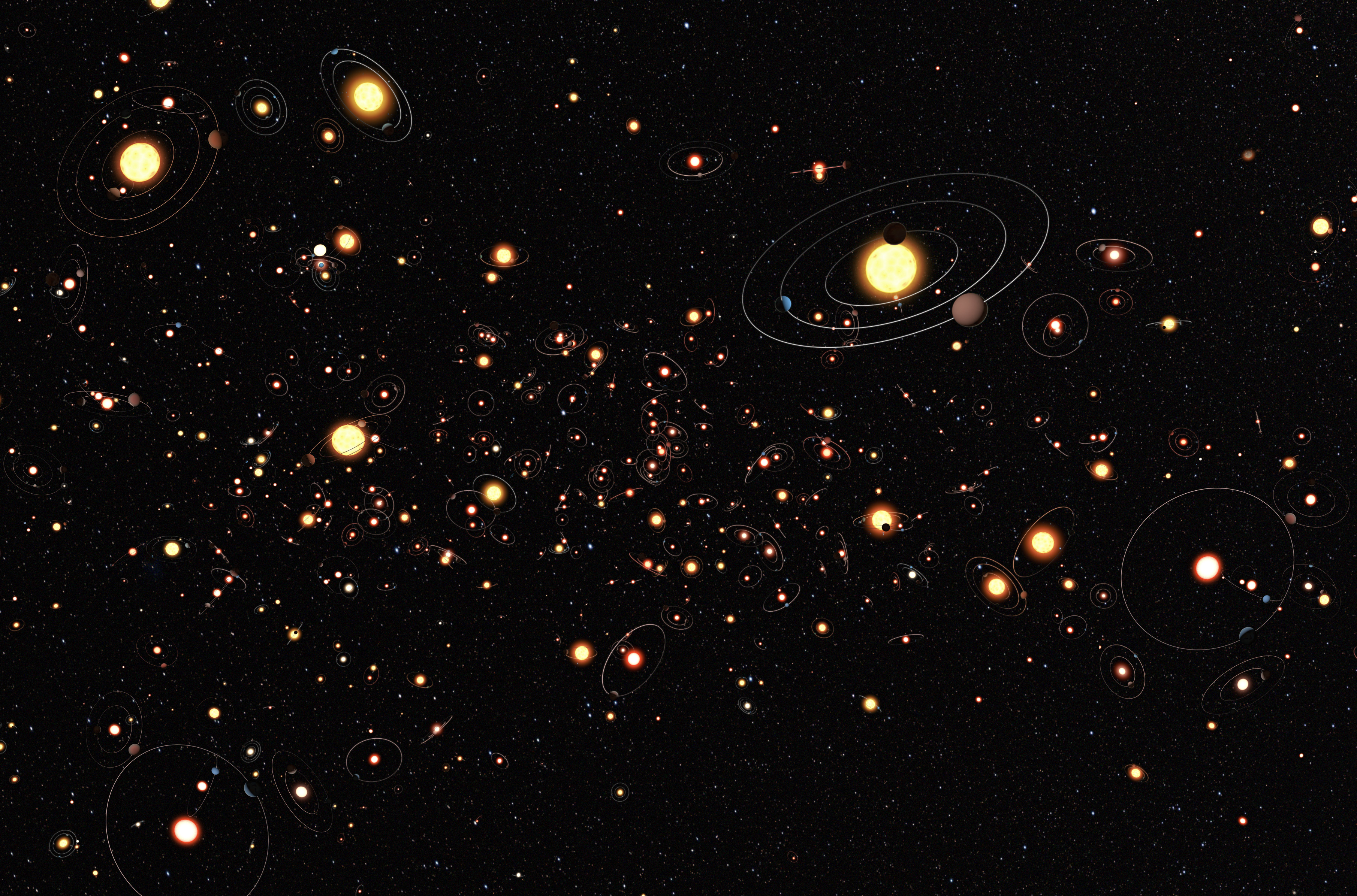
A team of German scientists recently examined data gathered by the Cassini orbiter around Enceladus’ southern polar region and found was evidence of organic signatures that could be the building blocks for amino acids.

Astronomers detected a giant planet orbiting a small star. The red dwarf GJ 3512 is located 30 light-years from us. The planet has much more mass than theoretical models predict.

Astronomers have identified six previously mild-mannered galaxies that suddenly transformed into voracious quasars, erupting in feeding frenzies powered by supermassive black holes.

Astronomers have spotted three supermassive black holes (SMBHs) at the center of three colliding galaxies a billion light years away from Earth. That alone is unusual, but the three black holes are also glowing in x-ray emissions.

It is now confirmed that the comet spotted a few weeks ago by amateur astronomer Gennady Borisov from MARGO Observatory, Crimea, is indeed coming from interstellar space. This is only the second known interstellar object to pass through our Solar System.

According to new study by a team of NASA scientists, Venus would have been able to maintain stable temperatures – from a low of 20 °C (68 °F) to a high of 50 °C (122 °F) – for about three billion years.

Astronomers using the Hubble space telescope have discovered water in the atmosphere of an exoplanet in its star’s habitable zone. The water was detected as vapour in the atmosphere. The planet is called K2-18b.

Largest documented asteroid breakup in the asteroid belt during the past two billion years caused enormous amounts of dust to spread through the solar system. The blocking effect of this dust lead to cooler temperatures which in turn caused diversification.

China’s new radio telescope FAST (Five-hundred-meter Aperture Spherical Radio Telescope) has double the collecting power of the Arecibo Observatory in Puerto Rico, which has a 305 meter dish.

The exoplanet is three times more massive than Jupiter and circles its star in an unusual elliptical orbit, one that would carry it between the Sun’s asteroid belt and the orbit of Neptune if it were transported to Earth’s solar system.

A new statistical analysis shows Earth-size planets are likely orbiting one in six Sun-like stars. The study is the most accurate estimate yet, researchers say, of the potential population of roughly Earth-size worlds in the Milky Way.

An international team of astronomers led by the University of Tokyo used ALMA to view 39 previously-undiscovered ancient galaxies, a find that could have major implications for astronomy and cosmology.

Observing Sagitarius A ( a supermassive balck hole in the center of our galaxy ) with the Keck's telescope, scientists just watched as its brightness bloomed to over 75 times normal for a few hours. Astronomers aren’t certain what caused the flaring.

Thursday, July 25th Elon Musk’s aerospace company succeeded in conducting their first untethered test with the Starhopper. This test once again validated the engine that will fulfill Musk’s promise of sending people to the Moon and to Mars.

Launched from the Baikonur Cosmodrome in Kazakhstan on Saturday, Spektr-RG will detect X-ray emissions from across the sky, including those from huge clusters of galaxies. It could help astronomers better understand dark energy.